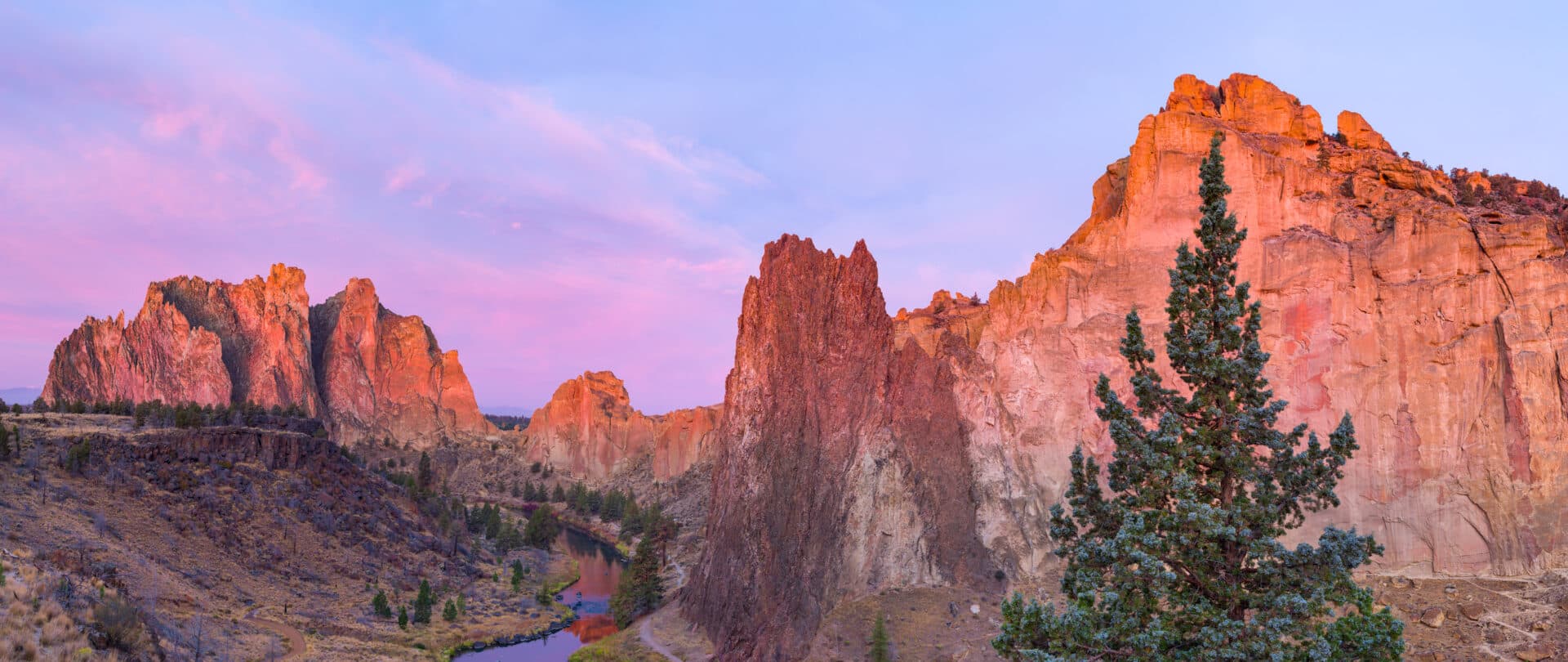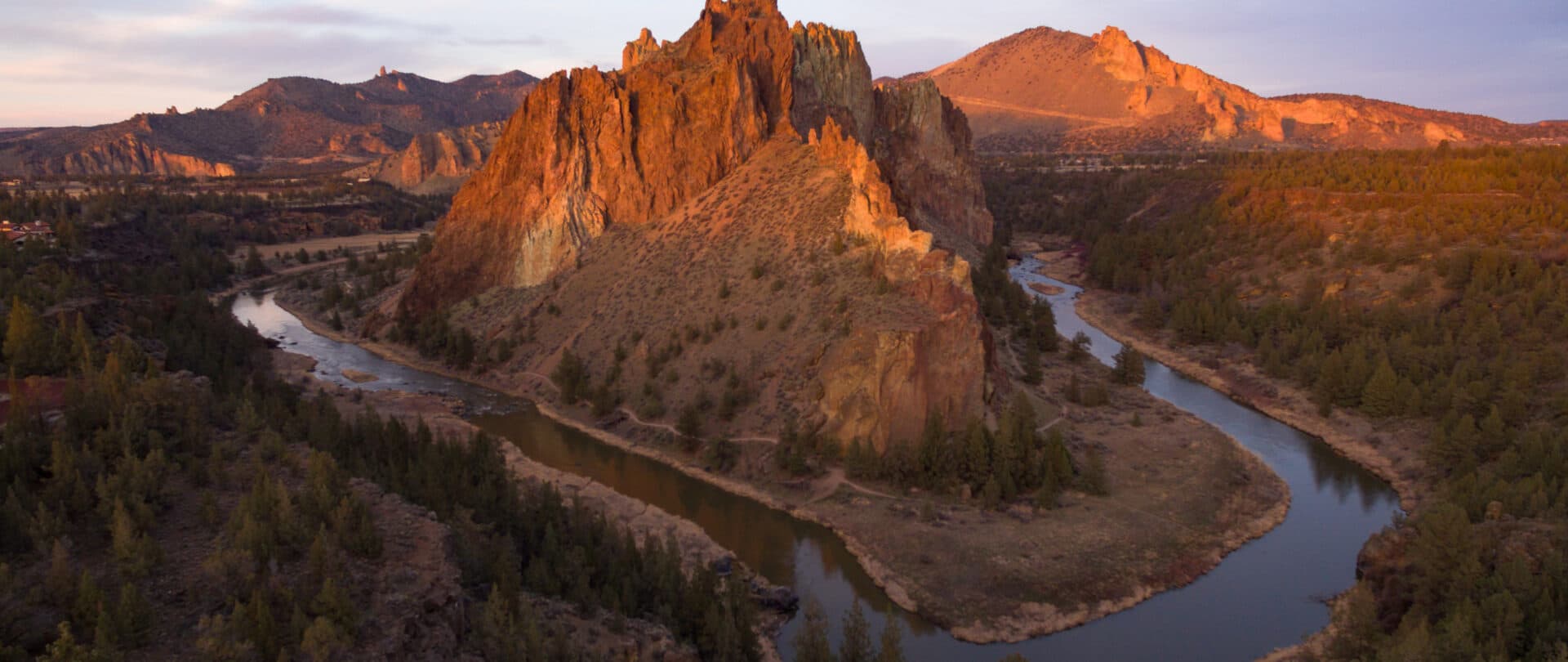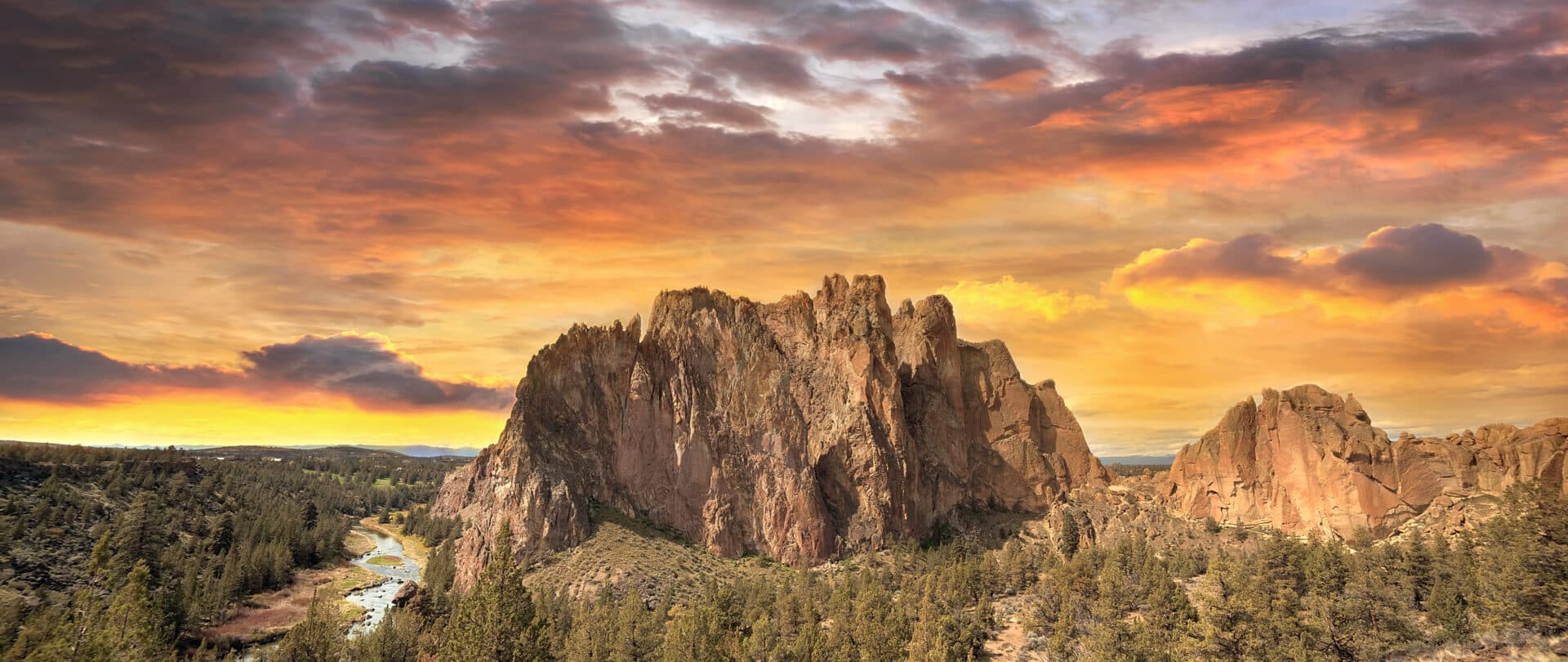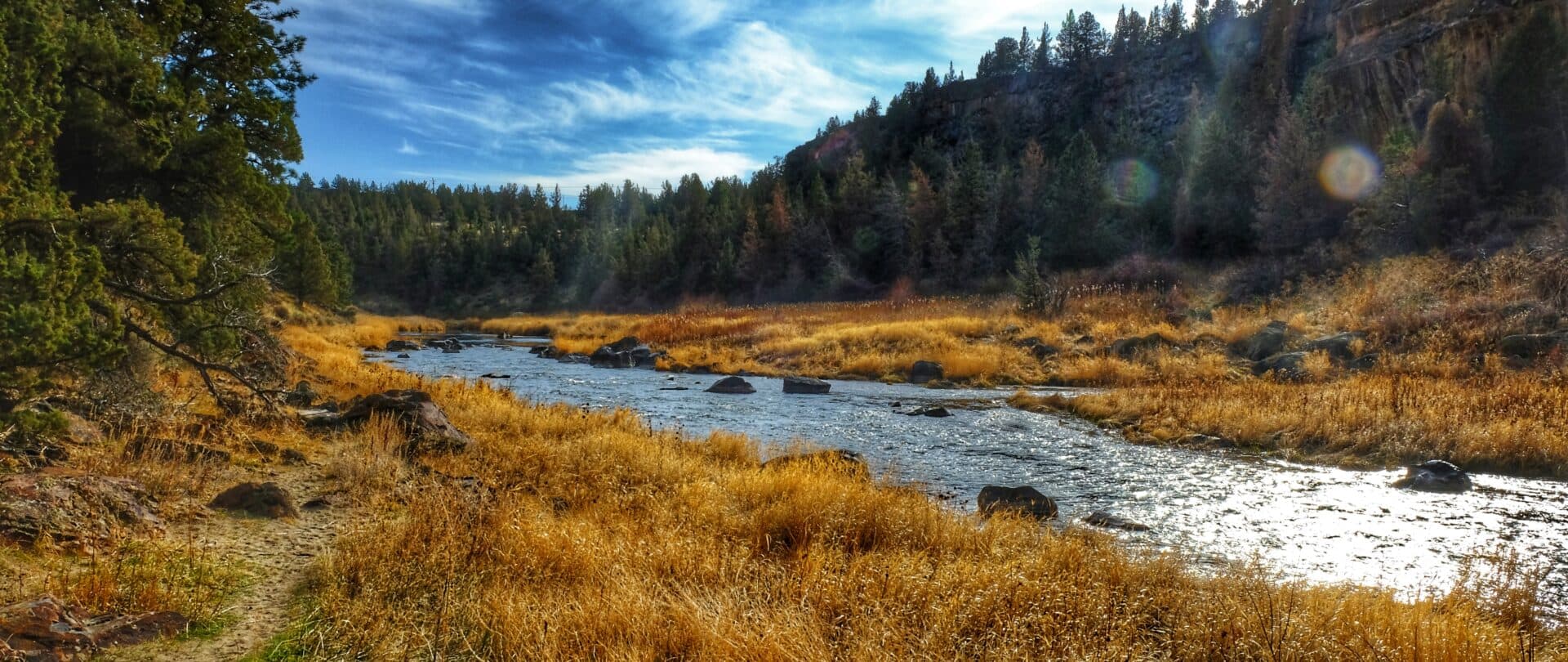Geological Marvel
Explore one of the most fascinating places in Central Oregon.
BY Meghan Robins
The popularity of Smith Rock State Park, located 26 miles north of Bend near the town of Terrebonne, has increased significantly in recent decades. Before it was known as the birthplace of American sport climbing and before it was named after an 1800s colonizer named Smith (exact details vary), it was known as Animal Village, according to Confederated Tribes of Warm Springs Elder Wilson Wewa, who writes about its origin story in his book, “Legends of the Northern Paiute.”
Smith Rock, a geological marvel, is a testament to the Earth's dynamic nature. Its unique features, resulting from millions of years of geological movement, will captivate any nature enthusiast. The most significant event in its formation was the eruption of an ancient supervolcano, which occurred approximately 29.5 million years ago. This cataclysmic event led to the volcano's collapse, forming the massive Crooked River Caldera. This Caldera, spanning a roughly 50-mile loop from Smith Rock to Prineville around Powell Butte and back to Terrebonne, is a striking testament to the park's geological significance.
Smith Rock, a living testament to the Earth's dynamic nature, is a landscape that both fire and water have shaped. Nearly 400,000 years ago, the Newberry Volcano, located 20 miles south of Bend, began erupting, sending hot lava flows across the landscape that reached all the way to Smith Rock. This created a basaltic overlay that covered some of the older formations, adding to Smith Rock’s intriguing geological story. Over the following thousands of years, volcanic activity continued to shape Central Oregon, and rivers like the Deschutes River and the Crooked River carved through softer rocks, causing erosion and the creation of the beautifully dramatic landscapes we see today.
Beyond being a geological wonder, Smith Rock State Park is a place of profound cultural significance. It is a living testament to the rich history of Indigenous Peoples who have inhabited Central Oregon for over 13,000 years. The area has been the ancestral home of the Wasco (Wasq'u), Warm Springs (Tana'ma), and Northern Paiute (Numu) Nations, which form the Confederated Tribes of Warm Springs. Under the Treaty of 1855, these Indigenous Nations retain their rights to access traditional lands for hunting, fishing, and ceremonial purposes, further emphasizing the park's cultural importance.
Today’s visitors to Smith Rock can learn about the area’s history through guided tours that align with their activity of choice. Though famously known for world-class rock climbing, Smith Rock is also a popular destination for hiking, trail running, fishing, camping, biking, horseback riding and bird watching.
The 690-acre Smith Rock State Park is home to myriad organized activities, such as guided climbing, a highline festival—where people string slacklines across great expanses and balance their way across—hikers and trail running events, mountain bikers (e-bikes are not allowed in the canyon) and horseback riding. Many people also enjoy camping at the park, which is available on a first-come, first-served basis.
Although Smith Rock offers something for everyone, do not be fooled by its buzzing atmosphere. The park presents physical challenges for many visitors. If you hike down into the canyon, always bring an extra layer of sun protection, snacks, and water. The temperatures can get hotter than expected, the trails are steep with loose footing, and the climb out of the canyon is always steeper than you remember.
Less ambitious hikers can enjoy the Rim Rock Trail, which overlooks the canyon from the parking lot. It has a lower elevation climb and more even terrain. Picnic areas are available, from which visitors can watch climbers, highliners, and other recreationists.
Because Smith’s Rock’s popularity has increased so much over recent years, in 2023, the park created a Smith Rock Master Plan to address visitor and park improvements. Their reports suggest that most visitors go there to hike, but trail access routes are steep, making it difficult for the average hiker to get in and out of the canyon. This causes accessibility issues, overheating, and unsure footing for some visitors.
There is also only one bridge over the Crooked River, which causes a noticeable pinch point for congestion. The 20-year plan proposes creating a more universally accessible rim trail to connect a new Welcome Center and add two new bridges to reduce congestion along the river corridor. The plan also addresses improving parking and bathroom facilities, adding interpretive and wayfinding signs, and developing focused areas to consolidate visitation and prevent habitat degradation.
Currently, the parking fee is $5 per day per vehicle or $30 for an annual pass. Overnight bivouac (bivy) camping in the campground costs $8 per night per person. Everything is on a first-come, first-served system, but the Park is considering upgrading to an online reservation and permitting system to improve communications between visitors and staff. Like most state parks, Smith Park is open from dawn until dusk every day of the year, although some areas close seasonally to protect bird nesting sites.
There is much to learn about Smith Rock State Park and many ways to explore. If you’re making the trip, be prepared for an outdoor adventure in one of the most beautiful and geologically fascinating places in Central Oregon.




